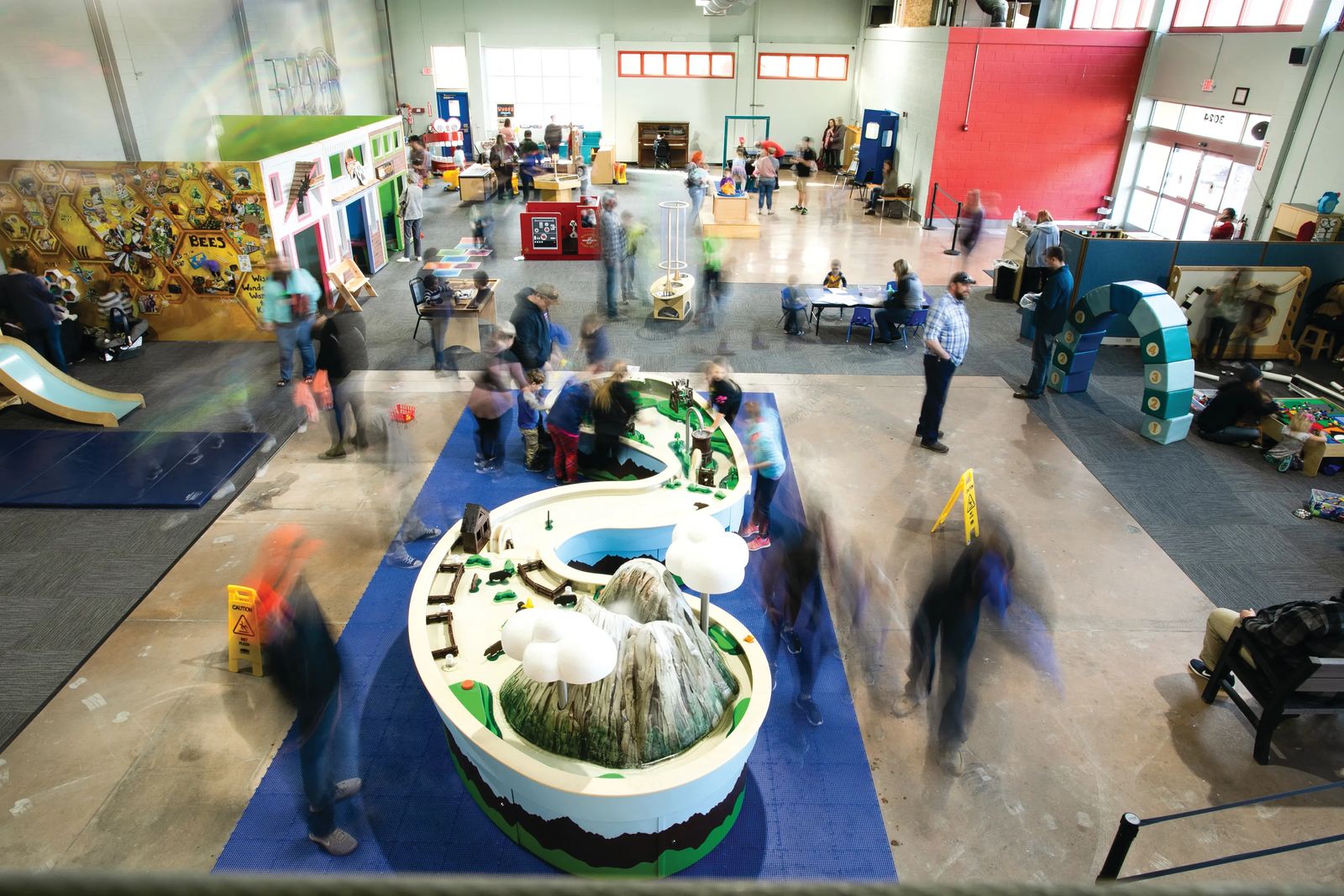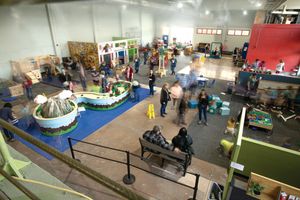
Wise Wonders Charts New Territory
February 1, 2020 | by stephanie hobby | photos by lovely hitchcock
Soaring ceilings and expansive floor space set the tone for visitors from the moment they walk into the new Wise Wonders Children’s/Science and Discovery Museum location. The facility is more than double the size of the previous museum, it offers quadruple the capacity, and has dedicated spaces for a variety of activities. Executive Director Pete Bolenbaugh is enthusiastic about the museum’s potential now that it’s housed in a much more accommodating space.
"Being here has allowed us to spread out and have more room around our exhibits," he said, adding that the higher ceilings make it feasible to do things like launch water and air pressure rockets, an impossibility in the last facility. “Really, we just have the ability to dream bigger. We were limited by what we could physically fit into the building; there were a lot of things we had to bring in in pieces and parts and construct inside. Now we have larger openings into the building and can bring bigger exhibits in much more easily.”
The extra space also means homeschool visits and school fieldtrips will be much easier for museum staff. The previous capacity of only 70 people meant that large groups had to come in after-hours and could be difficult to schedule; now groups can come in during regular hours and make use of the classroom, which has a door to minimize museum noise, helping participants focus on what is being taught in class.
Other features include a coffee bar, tables and chairs, and the potential to expand to other parts of the building. Bolenbaugh said he’d like to build a shop or makerspace to encourage members of the public to come and learn how to build things safely.
While many exhibits are familiar to regular museum patrons, Bolenbaugh is busy making plans for the next phase of the museum's story. He is working with the Billings Career Center, where he took high school engineering courses, to design and build new exhibits. These displays are intended to teach a broader variety of scientific concepts. Ideally, this would be an ongoing partnership between Wise Wonders and the Career Center.
The incoming exhibits built by Career Center students are designed to interest everyone, not just young children, something the museum is incorporating into its future goals. “We are in the process of making the transition from Wise Wonders Children’s Museum to Wise Wonders Science and Discovery Museum. It really is somewhat of a philosophical or culture change,” said Bolenbaugh, addressing his concern that interest in science tends to drop among junior high students. "We want to keep what we do for little kids because we do it well, and we see a place for that, but we're trying to be part of a solution for older students."
Building on Wise Wonders' original mission of engaging "curious, creative, and scientific minds in a playful learning environment for all children and families," Bolenbaugh wants to grow the museum’s reach to support families with older children and a variety of backgrounds.
One possible future exhibit would be an aerating sand table; when air pressure is applied to sand, the sand starts acting more like a liquid. Younger children would love turning the table on and pushing boats through the liquid sand. At the same time, older kids would probably start thinking about the physics playing out in front of them. "And a dad like me will just be trying to push kids out of the way to get their turn to play with the exhibit," Bolenbaugh laughed. “That’s really our focus going forward; we’re trying to find exhibits that anyone from any age or background can walk up to and really get something out of it. They need to be interactive, visually stimulating, but also educational.”
Founded in 2009 by the Junior League of Billings with just $3,000 and a handful of exhibits, Wise Wonders has come a long way in the last decade and looks to continue on its impressive trajectory. Bolenbaugh joined the museum staff in March of last year and assumed the executive director role in August. He is planning to use his background in sciences - he has a physics degree from the University of Montana - to foster the same love of STEM within the local community. He plans to offer regularly updated exhibits and programming to encourage repeat visitors and has the goal of someday becoming a tourist destination.
"To be perfectly honest, we can grow as much as the Billings community wants to get behind us," he said, explaining that expanding into nearby real estate is not out of the question if the need ever arose. "When people think of informal science education, I want Wise Wonders to be what they think about."
Wise Wonders continues to develop YouTube and other online content; be sure to check their website, www.wisewonders.org regularly. General admission is $5 per person, and hours are 10 a.m. - 5 p.m. Tuesday through Saturday.
Aaaand… action!
Kids (and adults) love "floating" a ball in an upward stream of air. While you can do this at home with a ping-pong ball and bendable straw or hairdryer, it's obviously way more fun to do it on a large scale at museums like Wise Wonders.
What’s actually happening is called Bernoulli's principle, first described back in 1783. As the air hits the ball, it doesn’t just ricochet out into oblivion, it’s actually pulled around the curved surface, which when you think about it, doesn’t really make sense - it should just keep going in a straight line away from the ball.
Here’s where it gets interesting: as the air stream hits that first curvature, it’s moving really fast, and picks up the air right next to the ball, pulling it away. This creates a tiny vacuum in the space on the side of the ball, and we all know how nature wants to fill empty spaces. The fast-moving air is forced to pull closer to the ball, filling that vacuum. So the airflow curves around the ball, rather than blasting away from it, holding the ball in place in a column of air.
Try it and see how far you can tilt the ball before gravity wins and causes the ball to fall. Does it matter how fast the air is going or how wide the air stream is? Try it with the high and low setting of the hairdryer. What happens?
Originally printed in the February 2020 issue of Simply Local Magazine
Never miss an issue, check out SLM's digital editions here!





